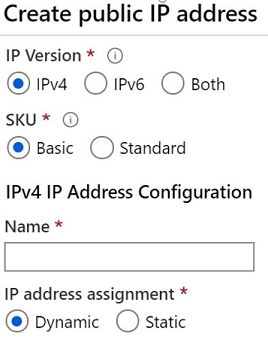An Azure Virtual Network (VNet) is a representation of your own network in the cloud. It is a logical isolation of the Azure cloud dedicated to your subscription. You can use VNets to provision and manage virtual private networks (VPNs) in Azure and, optionally, link the VNets with other VNets in Azure, or with your on-premises IT infrastructure to create hybrid or cross-premises solutions. Each VNet you create has its own CIDR block and can be linked to other VNets and on-premises networks if the CIDR blocks do not overlap. You also have control of DNS server settings for VNets, and segmentation of the VNet into subnets.
Virtual networks can be used in many ways.
subnets:
A virtual network can be segmented into one or more subnets. Subnets provide logical divisions within your network. Subnets can help improve security, increase performance, and make it easier to manage the network.
Each subnet contains a range of IP addresses that fall within the virtual network address space. The range must be unique within the address space for the virtual network. The range can't overlap with other subnet address ranges within the virtual network. The address space must be specified by using Classless Inter-Domain Routing (CIDR) notation.
https://www.aelius.com/njh/subnet_sheet.html
Note
There are restrictions on using IP addresses. Azure reserves five IP addresses within each subnet.
- x.x.x.0: Network address
- x.x.x.1: Reserved by Azure for the default gateway
- x.x.x.2, x.x.x.3: Reserved by Azure to map the Azure DNS IPs to the VNet space
- x.x.x.255: Network broadcast address
Create virtual networks:
You can create new virtual networks at any time. You can also add virtual networks when you create a virtual machine. Either way you will need to define the address space, and at least one subnet. By default, you can create up to 50 virtual networks per subscription per region. You can increase this limit to 500 by contacting Azure support.
Note
Default limits on Azure networking resources can change periodically so it's a good idea to consult the documentation for the latest information.
Static vs dynamic addressing:
IP addresses can also be statically assigned or dynamically assigned. Static IP addresses do not change and are best for certain situations such as:
- DNS name resolution, where a change in the IP address would require updating host records.
- IP address-based security models that require apps or services to have a static IP address.
- TLS/SSL certificates linked to an IP address.
- Firewall rules that allow or deny traffic using IP address ranges.
- Role-based VMs such as Domain Controllers and DNS servers.
Create public IP addressing:
IP Version. Select IPv4 or IPv6 or Both. Selecting Both will result in two Public IP addresses being created- one IPv4 address and one IPv6 address.
SKU. You cannot change the SKU after the public IP address is created. A standalone virtual machine, virtual machines within an availability set, or virtual machine scale sets can use Basic or Standard SKUs. Mixing SKUs between virtual machines within availability sets or scale sets or standalone VMs is not allowed.
Name. The name must be unique within the resource group you select.
IP address assignment. There are two types of IP address assignments.
- Dynamic. Dynamic addresses are assigned only after a public IP address is associated to an Azure resource, and the resource is started for the first time. Dynamic addresses can change if they're assigned to a resource, such as a virtual machine, and the virtual machine is stopped (deallocated), and then restarted. The address remains the same if a virtual machine is rebooted or stopped (but not deallocated). Dynamic addresses are released when a public IP address resource is dissociated from a resource.
- Static. Static addresses are assigned when a public IP address is created. Static addresses aren't released until a public IP address resource is deleted. If the address isn't associated to a resource, you can change the assignment method after the address is created. If the address is associated to a resource, you may not be able to change the assignment method. If you select IPv6 for the IP version, the assignment method must be Dynamic for Basic SKU. Standard SKU addresses are Static for both IPv4 and IPv6.



Comments
Post a Comment